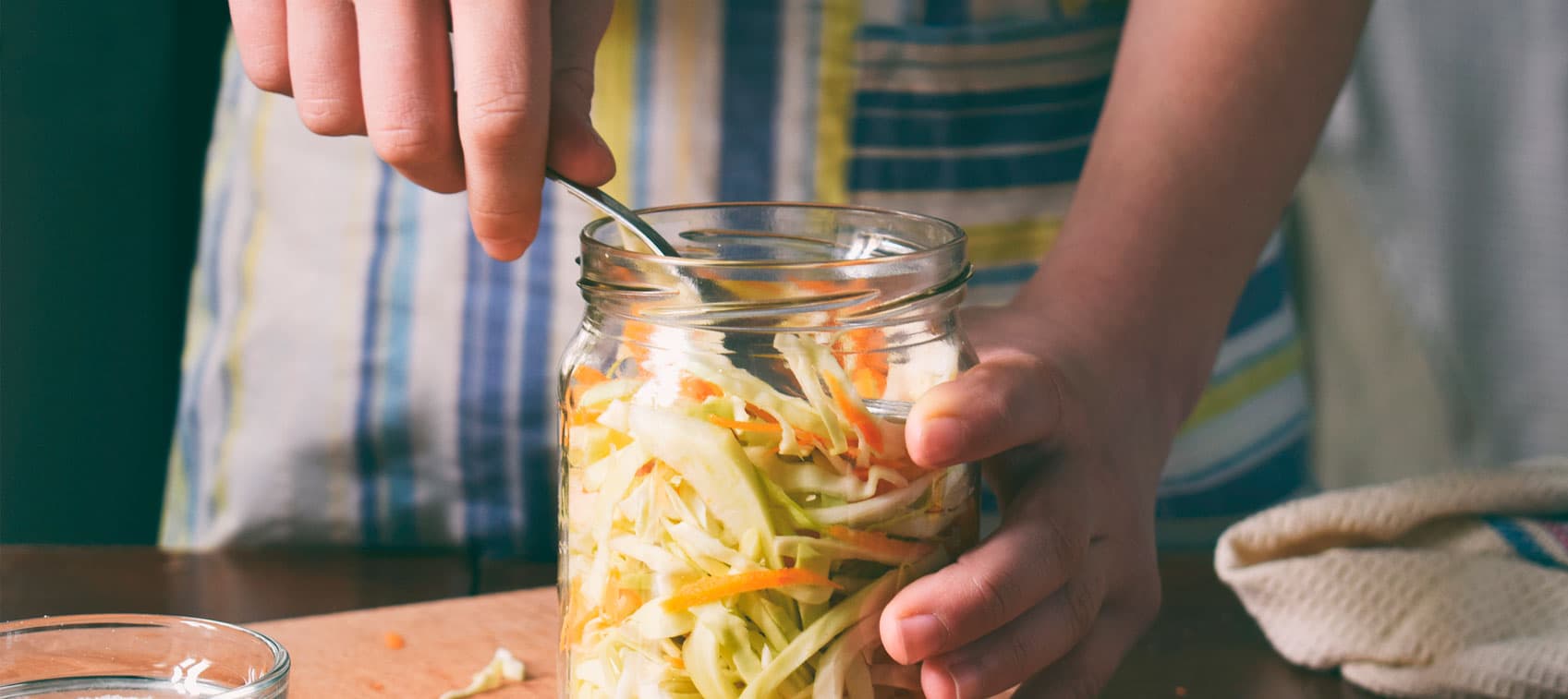
In the last 100 years, most traditional fermented foods have practically been eliminated from our diet. In this country, about the only fermented food we continue to eat with any regularity is pickles made from fermented cucumbers. But commercial pickles are made using vinegar instead of just salt and water—and then they are pasteurized, which kills all of the beneficial lactic acid bacteria that boost digestive health.
This process, in effect, renders the product nearly useless when it comes to improving health. (This true of commercial sauerkraut and yogurt, as well.)
The fact that 35 million people in this country alone suffer from irritable bowel syndrome, and that millions more suffer from ulcers, indigestion, recurring vaginal infections, chronic constipation or diarrhea, and dozens of other related health problems, should make it obvious that we need to add these foods back into our daily diet. But fermenting your own is the only way to realize much-needed gut health benefits.
There are three tools that come in handy for fermenting your own vegetables or cultured milk products:
- Miracle yogurt maker. To ferment milk at home, I recommend the Miracle Yogurt Maker by Miracle Exclusives.
- Fermenting crock pot. To ferment cabbage and other vegetables, I use a Fermenting Pot, also from Miracle Exclusives.
- Sally Fallon’s book, Nourishing Traditions. There are several books on the subject of lactic-acid fermentation as a method of preserving food, but I highly recommend this one. It has a wealth of information on various health topics and dozens of great recipes. Only one chapter deals with lactic acid-fermented foods, but it contains recipes for sauerkraut, pickled cucumbers, garlic, beets, radish, corn relish, potatoes, various chutneys, Korean kimchi, and more.
Simple Steps for How to Make Fermented Foods
However, if you don't want to spend the money on a fermenting pot, you can still ferment vegetables at home. Here the steps you need to know for how to make fermented foods at home:
- Choose a selection of your favorite vegetables. Organic vegetables like carrots, peppers, kale, seaweed, collards, and broccoli are good choices.
- Create a brine by juicing stalks of celery. Celery contains natural sodium and keeps the vegetables in an anaerobic environment, which encourages the growth of bacteria.
- Put the vegetables and celery brine in a canning or jam jar (fill to the brim to eliminate any trapped air). You may add some aromatics like garlic and rosemary for taste. Completely cover the mixture with a cabbage leaf.
- Seal the jar and keep in a warm, slightly moist place for 2 to 4 days. You can use a portable cooler filled with warm water to store the jars, or you can cover them with warm wet towels and set them in a casserole dish filled with warm water. Maintain a temperature range between 68 to 75 degrees Fahrenheit.
- After several days, move the jars to the refrigerator to be stored until consumption.
Chopped into bite-sized pieces, fermented vegetables are great as side dishes, garnishes, or in salsa.


